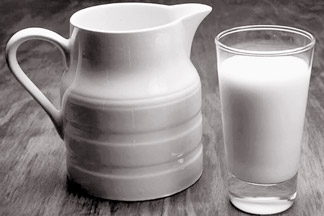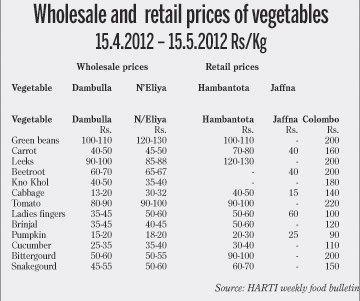|
Storage facilities to be improved:
Liquid milk to be popularised
By L.S. Ananda WEDAARACHCHI

|

Trade Ministry Secretary
Sunil Sirisena |
The public sector marketing network such as Sathosa and the
cooperatives should be expanded to provide a better service to consumers
said Cooperative Development and Internal Trade Ministry Secretary Sunil
Sirisena.
Fish and vegetable prices at the Peliyagoda fish market, Dedicated
Economic Centres and manning market were comparatively low compared to
those in the open market during past few weeks.
The Sunday Observer interviewed Trade Ministry Secretary Sunil
Sirisena and Hector Kobbakaduwa Agrarian Research and Training Institute
(HARTI) Director General Lalith Kantha Jayasekera on the varying prices
of commodities in the public sector trade institutions and the private
sector.
Excerpts of the interview:
Trade Ministry Secretary Sunil Sirisena
Q: Traders have inflated vegetable prices while producers find it
difficulty to secure a reasonable price to their produce. Milk farmers
too are beset with the same problem what could be done to rectify this
situation specially in the interest of the consumers?
A: After the new year and Wesak season there is a scarcity of
vegetables since a large stock reach the market during the new year and
Wesak seasons.
Manipulations by traders could be controlled by providing storage
facilities to preserve the excess vegetable produce during the peak
periods and release them to the market when there is a scarecity.
In developed countries cool rooms are used for this purpose. The
trade ministry with foreign assistance will introduce a similar facility
with Cabinet approval.
Q: When will the new scheme of purchasing and marketing liquid milk
come into effect, since the private sector milk powder producing
companies have refused to buy the milk farmer's produce.
A: Popularising liquid milk is a difficult task.
There is an effective collecting and marketing system in India where
it is handled by milk Cooperative Societies.
Liquid milk consumption is high among Indians.
Sri Lanka had a strong network of milk Cooperative Societies which
has failed.
A scheme to popularise liquid milk and an internal marketing network
for liquid milk sales islandwide will be launched soon.
The open market traders and super markets find it harder to increase
prices of essential food items such as onions, sugar, canned fish, dried
fish, rice and dhal due to the competitive prices of the Sathosa and
Cooperatives which have sufficient stocks of such food items.
Q: Consumers are compelled to buy fish, chicken and vegetables from
private shops where the prices are high since they are not available at
CWE or Cooperatives. How do you hope to remedy this situation?
A: The Sathosa and cooperative network needs to be expanded to
accommodate all such food items and help consumers. This will certainly
help change unfriendly consumer policies of private trading
establishments.
 Director General HARTI, Lalith Kantha Jayasekera Director General HARTI, Lalith Kantha Jayasekera
Q: What were the reasons for the price hike of vegetables and fish
during the last couple of weeks?
 A: Vegetable prices had increased during the last few weeks with the
harvests coming to end of the upcountry vegetables. The price of leeks
was Rs. 35 Kg, the highest due to limited supplies from Nuwara Eliya. A: Vegetable prices had increased during the last few weeks with the
harvests coming to end of the upcountry vegetables. The price of leeks
was Rs. 35 Kg, the highest due to limited supplies from Nuwara Eliya.
The prices of Nuwara Eliya and Welimada carrot fetched Rs. 13 per Kg
due to low supply. During the past week leeks recorded the highest
wholesale price ranging from Rs. 90 - Rs. 130 per Kg and the lowest was
cabbage ranging from Rs. 15 - Rs. 25 per Kg. Bittergoured highest price
of Rs. 23 per Kg in Tissamaharama and Embilipitiya during the post
harvesting season.
Q: What was the fish and fruit market situation
A: The prices of several fresh fish varieties have increased during
the Wesak season due to supply of limited stocks. The wholesale fruit
prices have been increased sharply after the rainy and Wesak festival
season.
In line with the increase wholesale prices, retail prices of most of
the fruits have increased. It is the black marketeers and middlemen who
exploit consumers due to the lack of a viable purchasing and marketing
mechanism.
These was a government purchasing arm the marketing Department in
1980s which purchased vegetables, fruits and other local produce. The
government marketing sector Sathosa and cooperatives should be
strengthened to maintain a stable price structure to cushion the impact
of fluctuating prices of vegetables, fish, eggs and other essential food
items. |

